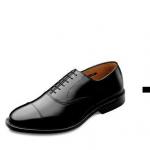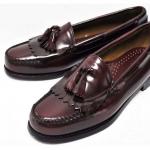Warm feet: how to choose men's boots for the winter
Winter is coming soon. Even now, the autumn weather regularly reminds us of the imminent arrival of cold weather with chilly winds and stubbornly dropping temperatures. And it's time to take your feet out of your favorite lightweight sneakers and move them into a warmer and cozier pair of shoes.
The choice of shoes for the winter is not an easy and responsible task. If the appearance and design of boots will depend on your taste, overall style and lifestyle, then the heat-saving properties of shoes should be taken seriously. You know that hypothermia of the legs, in addition to discomfort, can provoke many diseases, ranging from a common cold to more serious colds. And if the feet are cold, then the whole body will be cold, despite warm outerwear.
At the same time, you should not buy super-warm boots for every day if severe frosts are very rare in your area of residence. Or you usually travel by car and work in a well-heated room.
Criteria for choosing men's boots for the winter
When choosing high-quality boots for the winter, you should take into account a few postulates that will make the choice easier.
- Style Preferences. No matter how cool shoes are according to all sorts of characteristics, but there is this: “the soul lies or not.” Therefore, if the shoes really liked, read the following selection criteria.
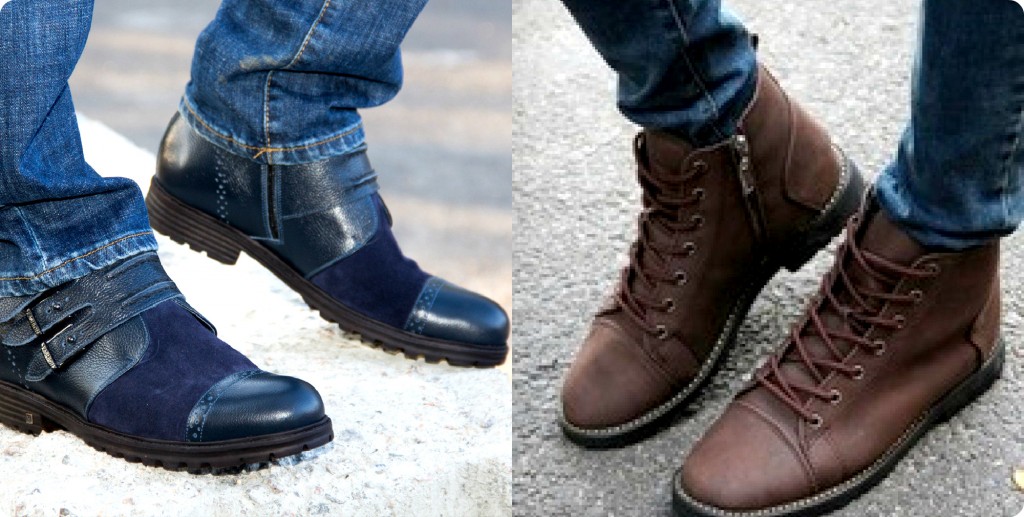
- The temperature regime of your winters. The weather sometimes surprises, but in general, you roughly know what kind of winters you have. Therefore, if your winter is rare frosts and frequent slush, then you should focus on waterproof models with thick leather, high soles and cool insulation. Well, if you live in a region with hard frosts, and -20 0 C is the usual temperature for you in winter, and you have seen it stronger, in this case you can’t do without a fluffy sheepskin insulation.
- Where are you going to wear the boots. Do you agree that leisure and extreme sports shoes combined with insulated sportswear, or everyday boots with insulated jeans, and so on, differ from each other in style, design and materials? Therefore, it is hardly worth buying sophisticated functional boots for extreme recreation if you plan to wear them in a radius of “home-car-work-home”. In this case, classic boots are suitable, warm, but not hot.
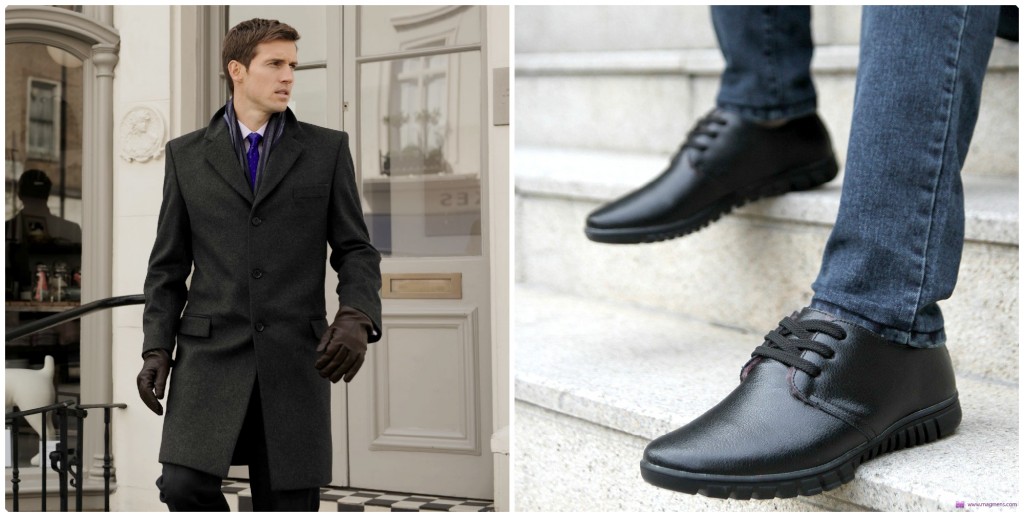
Slightly oversized
Of course, everyone knows their shoe size. However, when buying winter shoes, it is better to purchase a model at least half a size larger, avoiding planting your feet back to back. If the model is insulated with natural fur, then there should be at least a centimeter space left from the thumb to the toe of the shoe for fluffy warming villi.
And if the boots are insulated with a baize or fleece, an extra half size will also come in handy - you can add comfort to your feet with woolen socks or a fluffy insole.
Types of shoe insulation
On a note: heaters do not heat, but retain heat!
It is important to choose the right shoe insulation for your climate. They are of several types:
- Beaver lamb. We always want winter shoes to be as warm as possible, and sheepskin fur will fulfill your desire! Mankind has long known the best qualities of natural insulation, and still uses its experience, keeping feet warm with natural fur.
Sheep fur - it is the most common natural heat keeper. Ask your grandmother and mother - they will tell you that there is nothing warmer than sheepskin for shoes.
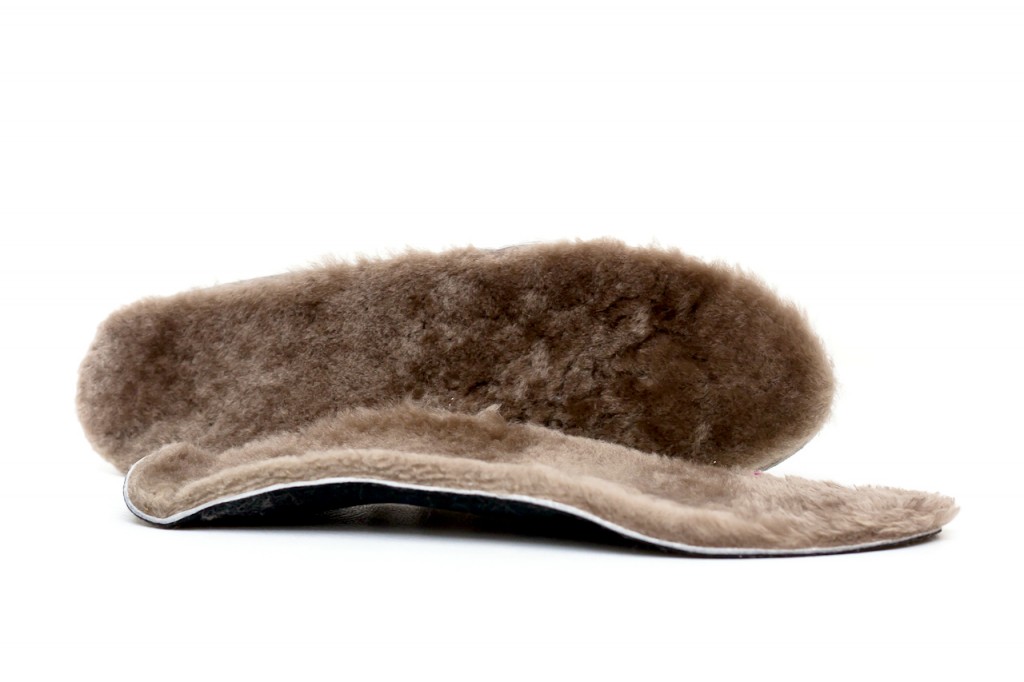
Quinoa is popular as a warming element thanks to special structure of wool, creating an air layer that keeps the boots warm. In addition, sheepskin is affordable and has remarkable qualities: it is hygroscopic and dries quickly.
Of course, cygkey shoes are a great option for persistent cold winters. But for winter slush and positive temperatures it is not at all suitable. If the feet get wet and sweaty, then the sheep's wool will quickly smooth and roll up, and this will soon be reflected in its heat-saving properties.
- wool fur(often referred to as "sheepskin") is a combination of natural sheep's wool and artificial fiber. The percentage of natural fiber to synthetics can be different: 50/50; 80/70 and other options. The basis of the insulation is fabric.
Woolen fur is cheaper than zigoki. However, it includes the qualities of natural fur: it "breathes" and keeps heat well. However, you cannot convince our man: natural 100% wool is better!
- Baikovy insulation ideal for shoes in frosts down to -5 0 C, but then it will be cold. A baize is a natural fluffy fabric that is made from cotton, wool or a mix of both. The bike is good because it is natural, environmentally friendly, dries quickly and keeps heat well.
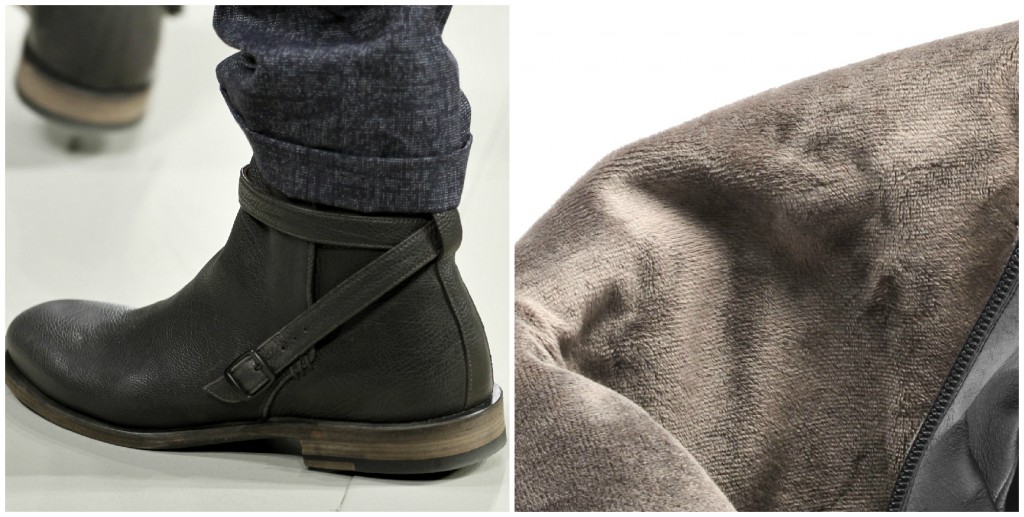
Boots on flannelette insulation are demanding on socks: they must be cotton and clean. Otherwise, it will be difficult for the bike to give off heat to the legs through synthetics, and it will quickly absorb the smell of stale socks.
- Fleece insulation for shoes can be called an analogue of flannelette insulation. That is, fleece is suitable for late autumn and warm winters with slight frosts. Fleece is a fluffy polyester fabric that has a number of advantages: light, breathes well, retains thermal insulation even when wet.
- Thinsulate- a modern insulation that can compete with zigeyka in terms of insulation properties. It is also called artificial swan down - it is so light and warm. It is compared with down due to the airy and weightless structure of the fiber.
Thinsulate (which can be translated as thin warmth) was developed for astronauts' uniforms, and after a series of tests it became successfully used as insulation for everyday clothes. A feature of thinsulate in thermal insulation is the ability to maintain body temperature.
And here the most interesting begins. After all, the temperature is different. If you are not cold, and you are warm, then thinsulate will adequately hold this moment, many even complain that it’s really hot in clothes on thinsulate. Well, if you put on boots on cold feet, then thinsulate will keep the cold.
Types of materials for shoes
Most often, winter shoes are made from leather and its substitute.
- Leather has been considered the ideal material for footwear for many years. It takes the shape of the leg (stretches), is comfortable to wear, does not get wet (especially in combination with special care products) and keeps heat well.
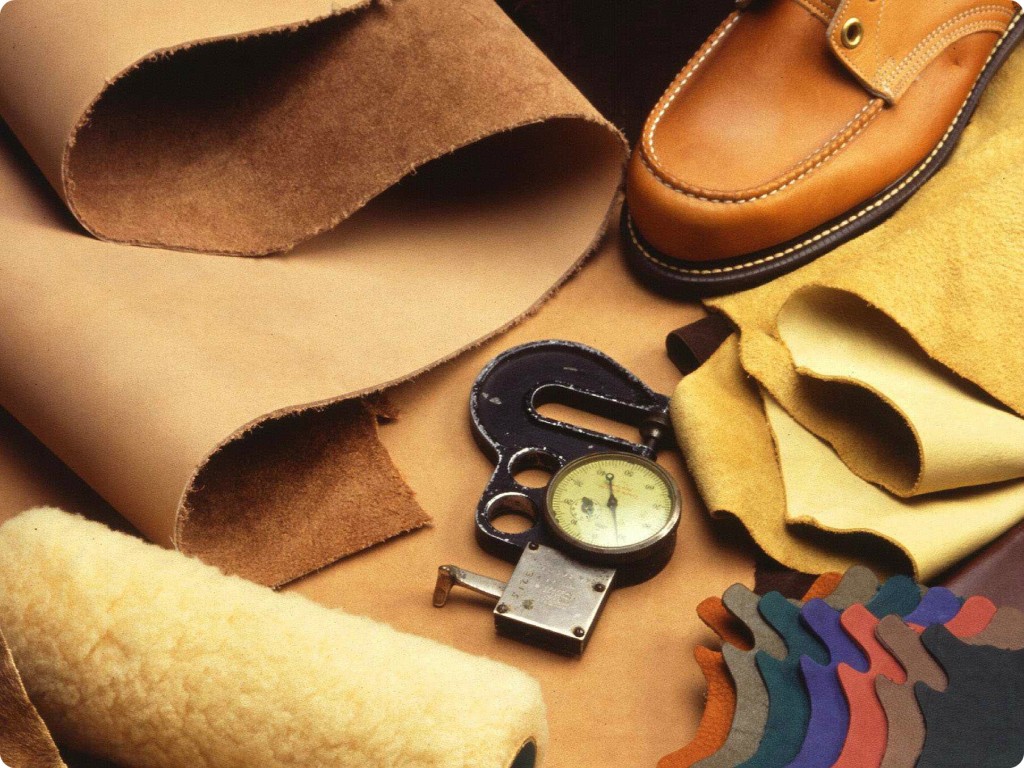
Leather comes in different types (pork, calf, and exotic) and different dressings, and of course the quality of the leather will affect the design and appearance of your boots. And different processing: smooth, suede, nubuck, washed, aged.
The more non-standard skin, the more delicate care it requires. For example, suede and nubuck do not like moisture and cannot imagine an attractive look without special brushes and caring sprays.
- Faux leather sometimes looks exactly like natural. Shoes made of artificial leather are cheaper than shoes made of natural materials. However, shoes made from such material can pass water, crack in the cold and quickly become unusable.
GORE-TEX shoes (waterproof)
And this is just a pleasant exception to the rule. Shoes with this technology can be made of artificial materials. However, thanks to the special Gortex laminate that covers the boot from all sides, moisture will not seep to your feet.
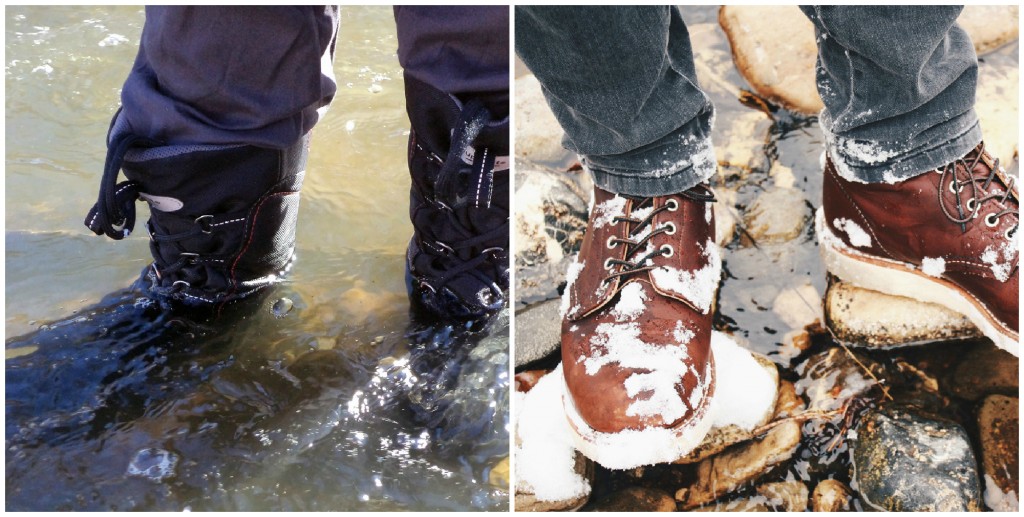
This technology is used in shoes for various purposes, both everyday and for recreation (tourism). Be sure: in shoes with Gortex technology, you will not get your feet wet in winter and autumn slush, and you will be comfortable: dry, warm, not hot. And you will know about the presence of this function by the sign sewn on the boot or the inscription on the performance label: “Gore-Tex”.
Pay attention to the sole
This part of the boots is in contact with the ground when walking, so it must be given special attention, starting from the thickness, material, and ending with the relief.
- The thickness of the winter sole should be more than one centimeter (a thin layer of the sole will give cold to the feet).
- The material for the sole is better to choose flexible and waterproof (rubber, polyurethane).
- The relief on the sole will protect you from slipperiness and falls into ice. Therefore, the more embossed the sole, the better. Well, if the pattern on the sole has a direction in different directions - this gives stability on ice.
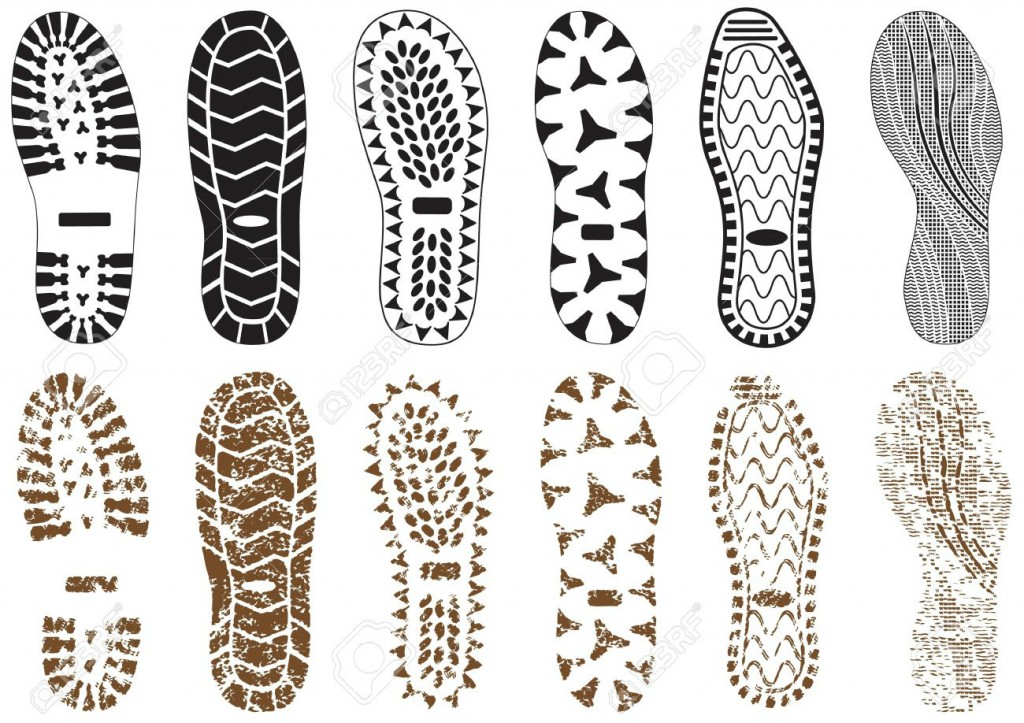
Dealing with slippery soles
It is this lack of footwear (slipperiness) that is responsible for falls and ice injuries. Therefore, if, due to inexperience, you have purchased shoes with slippery soles for the winter, this can be corrected with special “anti-ice” overlays or folk remedies that make the sole rough.
This is a patch glued to the sole, stuffed or glued pieces of felt and sandpaper.
And here's another tip. Apply Moment glue in a zigzag pattern on the sole, wait for it to harden, and then sand the sole with sandpaper (or you can sprinkle glue and sand). This method will give the sole unevenness and prevent slipping.
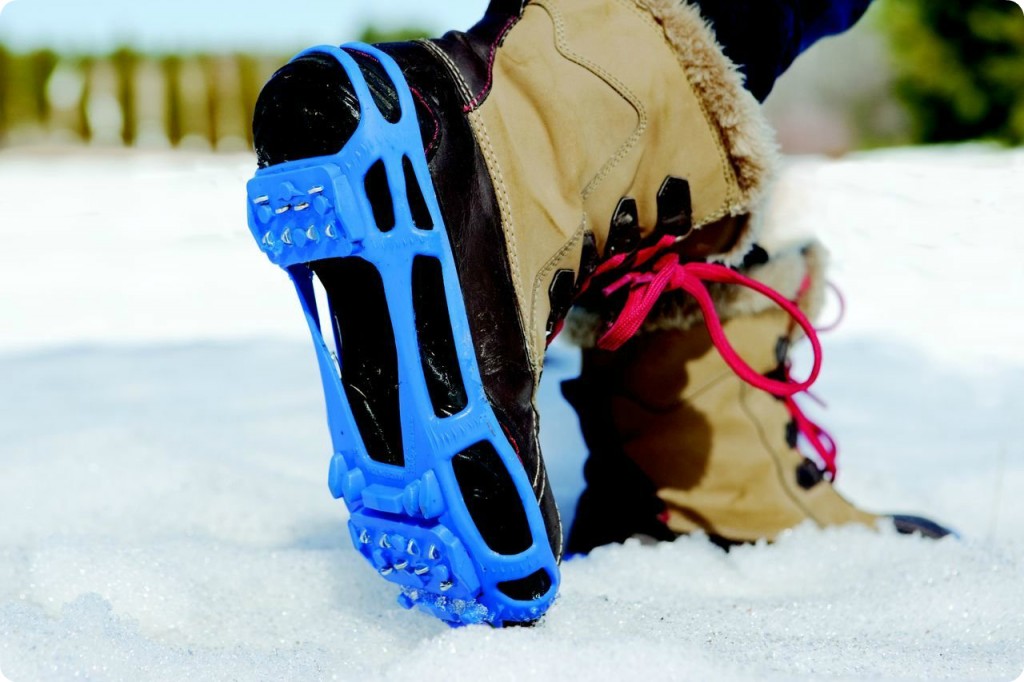
It turns out that choosing high-quality and comfortable shoes is not so simple. So many things to take into account. We hope that our article will help you decide on the choice of boots for this winter. And slippery-cold will pass for you in comfort: stable and warm.
The following two tabs change content below.

